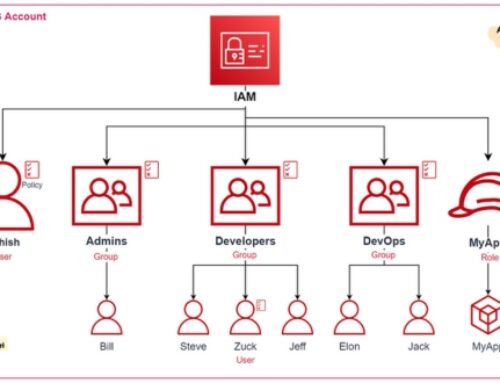Understanding AWS Lambda
What is AWS Lambda?

AWS Lambda is a serverless computing service provided by Amazon Web Services (AWS). It allows developers to run code without provisioning or managing servers. With Lambda, you can upload your code and AWS will take care of everything required to run and scale it. Lambda executes your code only when needed and automatically scales to handle from a few requests per day to thousands per second.
Benefits of AWS Lambda:
Serverless Computing: Lambda abstracts away server management, allowing developers to focus solely on writing code without worrying about server provisioning, maintenance, or scaling.
Cost-Effective: With Lambda, you pay only for the compute time consumed by your code. There are no charges when your code is not running, which makes it highly cost-effective for sporadic or event-driven workloads.
Automatic Scaling: Lambda automatically scales to accommodate the incoming requests or events. It can handle from a few requests per day to thousands per second without any manual intervention.
High Availability and Fault Tolerance: AWS Lambda automatically deploys code across multiple Availability Zones within a region to ensure high availability and fault tolerance.
Integrations: Lambda seamlessly integrates with other AWS services such as Amazon S3, Amazon DynamoDB, Amazon API Gateway, and many more, allowing developers to build complex applications easily.
Event-Driven Architecture: Lambda is well-suited for event-driven architectures, where code is triggered by various events such as changes in data, user actions, or system events.
Use Cases for AWS Lambda:

Real-time File Processing: Lambda can be used to process files uploaded to Amazon S3, enabling real-time processing of data without the need for maintaining dedicated servers.
API Backends: Lambda functions can serve as backend logic for APIs created using Amazon API Gateway, allowing developers to build scalable and cost-effective API solutions.
Data Processing and Analytics: Lambda can be used for processing streaming data from sources like Amazon Kinesis or analyzing data stored in Amazon DynamoDB, enabling real-time analytics and insights.
IoT Applications: Lambda functions can process data from IoT devices, allowing developers to build scalable and efficient IoT applications without managing servers.
Scheduled Tasks: Lambda functions can be scheduled to run at specific intervals using AWS CloudWatch Events, making them suitable for running periodic tasks such as backups, cleanup jobs, or report generation.
Machine Learning Inference: Lambda can be integrated with AWS AI services like Amazon SageMaker for running machine learning inference tasks, making it easy to deploy and scale ML models.
Getting Started with AWS Lambda
Setting up an AWS account: To get started with AWS Lambda, you first need to create an AWS (Amazon Web Services) account if you haven’t already. You can do this by visiting the AWS website and following the sign-up process. During this process, you’ll need to provide some basic information and set up your billing preferences. Once your account is created, you’ll have access to the AWS Management Console where you can manage your Lambda functions and other AWS services.
Understanding Lambda pricing: AWS Lambda pricing is based on the number of requests and the duration of your function executions. There is a free tier available which includes 1 million free requests per month and 400,000 GB-seconds of compute time per month. Beyond the free tier, you are charged based on the number of requests your functions receive and the time they run, rounded up to the nearest 100 milliseconds. You can find more detailed pricing information on the AWS Lambda pricing page.
Creating your first Lambda function: Once your AWS account is set up and you understand the pricing, you can create your first Lambda function. To do this, you’ll need to log in to the AWS Management Console, navigate to the Lambda service, and click on the “Create function” button. You’ll then be prompted to choose a runtime (e.g., Node.js, Python, Java, etc.), configure your function’s triggers and permissions, and write the function code. Once your function is created, you can test it using the built-in testing tools and deploy it to the AWS cloud.
AWS Lambda provides a scalable and cost-effective way to run code without provisioning or managing servers. By following these steps, you can quickly get started with building and deploying serverless applications using Lambda.
Anatomy of an AWS Lambda Function
Handler Function:
The handler function is the entry point to your Lambda function. It’s the function that AWS Lambda invokes when the function is triggered.
This function typically takes two parameters: an event object and a context object. The event object contains data passed to the function when it’s invoked, while the context object provides information about the execution environment and allows the function to interact with AWS Lambda.
Trigger Sources:
Trigger sources are the events or actions that cause AWS Lambda to execute your function. Lambda functions can be triggered by various AWS services such as Amazon S3, Amazon DynamoDB, Amazon API Gateway, Amazon SNS, etc.
Additionally, Lambda functions can be triggered by external events using services like Amazon EventBridge (formerly CloudWatch Events) or by custom events through direct invocation.
Runtime Environments:
AWS Lambda supports multiple runtime environments, allowing you to write your Lambda functions in various programming languages. As of my last update, these runtimes include Node.js, Python, Java, .NET, Go, Ruby, and custom runtimes.
Each runtime environment provides a specific execution environment for your function, including libraries, dependencies, and runtime settings.
Memory Allocation and Timeouts:
Memory allocation refers to the amount of memory that is allocated to your Lambda function. You can configure the memory size for your function, and AWS charges you based on the amount of memory allocated.
Timeouts specify the maximum amount of time (in seconds) that your function is allowed to run before AWS Lambda terminates it. You can configure the timeout based on the expected execution time of your function.
These configurations are crucial for optimizing the performance and cost-effectiveness of your Lambda functions. Allocating sufficient memory and setting appropriate timeouts ensure that your functions can handle their workload efficiently without incurring unnecessary costs or timeouts.
Programming AWS Lambda Functions
Supported Programming Languages:
AWS Lambda supports several programming languages, allowing developers to choose the language that best suits their needs and preferences. As of my last update, the following languages are supported:
- Node.js
- Python
- Java
- Go
- .NET Core (C#)
Each language has its own SDK and runtime environment provided by AWS Lambda, making it easy for developers to write functions in their preferred language without worrying about managing the underlying infrastructure.
Best Practices for Writing Lambda Functions:
Writing efficient and effective Lambda functions involves following best practices to ensure optimal performance, scalability, and maintainability. Here are some key best practices:
- Keep functions small and focused: Break down your application logic into smaller, modular functions that do one thing well. This promotes code reusability and makes it easier to manage and debug.
- Use native libraries and language features: Minimize external dependencies and leverage native libraries and language features to improve performance and reduce overhead.
- Optimize memory allocation: Configure your Lambda functions with an appropriate amount of memory to optimize performance. Monitor resource usage and adjust memory allocation as needed.
- Implement asynchronous processing: Use asynchronous processing techniques such as event-driven architecture to handle concurrent requests efficiently and improve scalability.
- Enable caching: Utilize caching mechanisms such as AWS Lambda’s built-in caching or external caching services to reduce latency and improve response times.
- Follow security best practices: Implement proper authentication, authorization, and encryption mechanisms to protect sensitive data and prevent security breaches.
- Implement retries and circuit breakers: Handle transient failures gracefully by implementing retry and circuit breaker patterns to improve resilience and fault tolerance.
- Monitor and log function invocations: Implement logging and monitoring solutions to track function invocations, identify performance bottlenecks, and troubleshoot errors effectively.
Error Handling and Logging:
Effective error handling and logging are crucial for identifying and diagnosing issues in Lambda functions.
- Use try-catch blocks: Wrap critical sections of code in try-catch blocks to catch and handle exceptions gracefully.
- Log errors and exceptions: Use logging frameworks provided by your chosen programming language (e.g., console.log in Node.js, logging module in Python) to log errors and exceptions.
- Include meaningful error messages: Provide descriptive error messages that help identify the cause of the error and guide troubleshooting efforts.
- Utilize CloudWatch Logs: AWS Lambda integrates seamlessly with Amazon CloudWatch Logs, allowing you to centralize logs from multiple Lambda functions for easy monitoring and analysis.
- Implement custom metrics and alarms: Use CloudWatch Metrics to track custom performance metrics and set up alarms to alert you to abnormal behavior or errors.
- Monitor function invocations: Monitor function invocations, duration, and error rates using CloudWatch Metrics to identify performance issues and optimize resource allocation.
Working with Event Sources
Working with event sources in the context of AWS Lambda involves setting up triggers that automatically invoke your Lambda functions in response to certain events happening within your AWS environment or from external sources. These events can come from various AWS services such as S3 (Simple Storage Service), DynamoDB (NoSQL database service), SQS (Simple Queue Service), SNS (Simple Notification Service), and others. Additionally, you can also set up custom event sources, allowing you to trigger Lambda functions based on events occurring in your own applications or systems.
AWS Event Sources:

- S3 (Simple Storage Service): You can configure Lambda functions to automatically execute in response to events occurring in S3 buckets, such as object creation, deletion, or modification. For example, you might trigger a Lambda function to resize images uploaded to an S3 bucket.
- DynamoDB: With DynamoDB Streams, you can trigger Lambda functions in response to changes in your DynamoDB tables. This allows you to react to database updates, inserts, deletes, etc., and perform custom logic.
- SQS (Simple Queue Service): SQS can be configured to send messages to Lambda functions, enabling serverless processing of messages from queues. This is useful for decoupling components in distributed systems.
- SNS (Simple Notification Service): SNS topics can trigger Lambda functions, allowing you to respond to notifications published to SNS topics. This can be useful for handling various kinds of system events, such as monitoring alerts or notifications from other AWS services.
Custom Event Sources:
- Apart from AWS services, you can create custom event sources to trigger Lambda functions based on events from your own applications or systems. This involves setting up an event source, such as an HTTP endpoint or message queue, to send events to Lambda for processing.
- For example, you might create an API Gateway endpoint that triggers a Lambda function whenever an HTTP request is received. This allows you to integrate Lambda functions with your own custom applications or third-party services.
Configuring Event Sources for Lambda Functions:
- Configuring event sources for Lambda functions involves specifying the trigger and defining the event source mapping. This is typically done through the AWS Management Console, CLI (Command Line Interface), or SDKs.
- For each event source, you define the specific event(s) that should trigger the Lambda function and configure any necessary permissions and settings.
- Once configured, Lambda automatically monitors the specified event sources and triggers the associated functions whenever the configured events occur.
Working with event sources allows you to create event-driven architectures, where your serverless functions respond dynamically to events happening within your AWS environment or from external sources, enabling highly scalable and efficient application workflows.
Securing AWS Lambda Functions
Securing AWS Lambda functions is critical for ensuring the integrity, confidentiality, and availability of your serverless applications. Here are some key aspects to consider:
IAM Roles and Permissions:
AWS Identity and Access Management (IAM) allows you to define granular permissions for Lambda functions.
Use IAM roles to grant Lambda functions only the necessary permissions they need to execute their tasks. Avoid using overly permissive policies.
Follow the principle of least privilege, granting only the minimum permissions required for the Lambda function to perform its tasks.
Regularly review and update IAM policies to ensure they remain aligned with the principle of least privilege and the evolving requirements of your application.
Encryption at Rest and in Transit:
Encrypt sensitive data stored within your Lambda function’s environment variables or any other storage systems used by your function.
AWS Key Management Service (KMS) provides robust encryption capabilities for data at rest and allows you to manage encryption keys securely.
Utilize encryption mechanisms such as HTTPS/TLS for securing data transmitted to and from Lambda functions.
Ensure that data is encrypted both within Lambda functions and when stored in associated AWS services like Amazon S3, Amazon RDS, or DynamoDB.
Best Practices for Securing Lambda Functions:
- Implement secure coding practices to prevent common vulnerabilities such as injection attacks, cross-site scripting (XSS), or sensitive data exposure.
- Regularly update dependencies and libraries used in your Lambda functions to patch security vulnerabilities.
- Monitor and log function invocations, errors, and suspicious activities using AWS CloudWatch Logs and CloudTrail.
- Implement AWS Lambda function versioning and aliasing to maintain a stable and secure deployment environment while rolling out updates.
- Utilize AWS Config and AWS Lambda event notifications to detect and respond to unauthorized changes or misconfigurations.
- Leverage AWS WAF (Web Application Firewall) to protect your Lambda functions from common web-based attacks.
- Implement AWS Shield to protect against DDoS (Distributed Denial of Service) attacks targeting your serverless applications.
Advanced AWS Lambda Concepts
VPC Integration:
AWS Lambda allows you to run your functions within a Virtual Private Cloud (VPC). This provides you with greater control over your network configuration, enabling you to access resources within your VPC such as databases, Elastic Load Balancers, or other AWS services that are not publicly accessible. When you integrate Lambda with a VPC, you can specify subnets and security groups to control inbound and outbound traffic to and from your Lambda function.
Environment Variables:
Environment variables are key-value pairs that you can configure and manage for your Lambda functions. They enable you to dynamically change the behavior of your functions without modifying the code. Environment variables are particularly useful for storing sensitive information such as database credentials, API keys, or configuration settings. You can set environment variables either through the AWS Management Console, AWS CLI, or AWS SDKs.
Concurrency and Scaling Considerations:
Concurrency refers to the number of Lambda function instances that can run simultaneously. AWS Lambda automatically scales the number of instances based on incoming requests and concurrency settings. Understanding concurrency and its implications is crucial for designing scalable and cost-effective serverless applications. You can configure the concurrency settings for your Lambda functions to control how they scale and handle concurrent requests.
Versioning and Aliases:
Versioning allows you to create different versions of your Lambda functions as you make changes to them over time. Each version receives a unique ARN (Amazon Resource Name) that you can reference in your applications. This enables you to deploy updates to your functions without impacting existing invocations. Aliases are pointers to specific versions of your functions. They allow you to abstract away the underlying versioning details and provide a stable endpoint for invoking your functions. Aliases are commonly used for implementing blue-green deployments, A/B testing, or routing traffic between different versions of your functions.
Conclusion
AWS Lambda offers a powerful and flexible platform for building serverless applications and services with minimal operational overhead. By mastering AWS Lambda function development, you can unlock the full potential of serverless computing and accelerate innovation in your organization. Whether you’re building microservices, processing real-time data, or implementing IoT solutions, AWS Lambda provides the tools and services you need to succeed in the era of cloud-native development.
You upload your code to AWS Lambda and specify the function’s entry point. AWS Lambda automatically scales and provisions the required infrastructure to execute the code in response to incoming events, such as HTTP requests or messages from other AWS services.
AWS Lambda supports several programming languages, including Python, Node.js, Java, Go, Ruby, C#, and PowerShell.
AWS Lambda is commonly used for tasks such as data processing, real-time file processing, backend API development, IoT data processing, automation of tasks, and handling asynchronous events from other AWS services.
You can deploy your code to AWS Lambda using the AWS Management Console, AWS CLI (Command Line Interface), AWS SDKs (Software Development Kits), or third-party deployment tools integrated with AWS Lambda.
AWS Lambda pricing is based on the number of requests and the duration of code execution. You pay only for the compute time consumed, rounded up to the nearest 100ms, and the number of requests processed.








